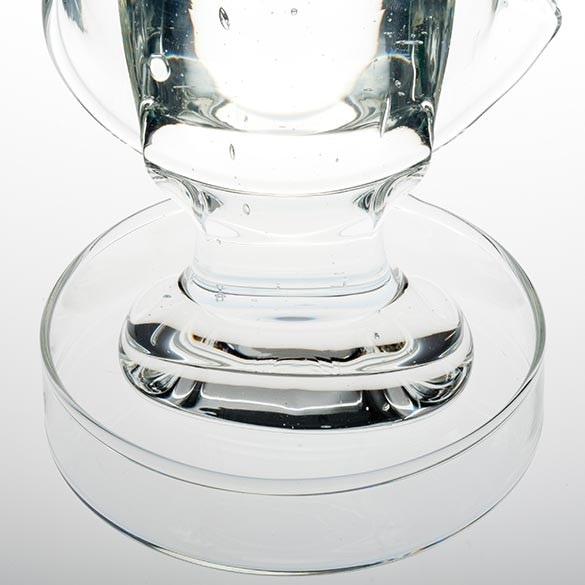.jpg) By Dunja BozicOct 31 2018
By Dunja BozicOct 31 2018Rheology modifiers are common additives in a wide range of products and industries. The scientists use them to obtain desired product properties, from thickness of a cream or better pouring properties of a gel in cosmetic industry to reducing viscosity of bitumen in asphalt production. All rheology modifiers can be categorized in two main groups: organic and inorganic modifiers.

Image Credits - https://www.lubrizol.com
Inorganic Rheology Modifiers Chemistry and Properties
Inorganic rheology modifiers are based on inorganic substances such as silicas and clays. Most come in a form of a powder and show thixotropic shear-thinning behavior and high yield values.
This non-Newtonian behavior is characterized by viscosity decrease with shear rate increase and its time dependent recovery after shearing, features particularly desirable for suspending and gelling agents which is the most common use of inorganic rheology modifiers.
Properties of inorganic rheology modifiers differ from one to another, and even in the same modifier type, depending on chemistry of a modifier, particle sizes, crystallinity and other characteristics.
Some of the commonly used inorganic modifiers are described below.
Fumed Silica
Fumed silica is one of the most commonly used inorganic rheology modifier, and a long time dominant in adhesive and sealant industry.
It is an amorphous silicon dioxide with specific gravity of 2.2. Size of its particles varies from 7 to 40 nm and surface area from 50 to 380 m2/g.
Fumed silica has no internal surface area, unlike precipitated silica. Thixotropic behavior is a result of hydrogen bonds between fumed silica particles which form loose lattice-like network. This network raises the apparent viscosity of a formulation. Relatively weak hydrogen bonds result in easy network disruption with applied stress or shear, as well as quick recovery to the initial form.
Fumed silica has high surface area to weight ratio and only a small amount is needed in the formulation (1-5 % by weight) to achieve desired properties. As its surface chemistry is directly linked to rheological properties, fumed silica grades are characterized by surface area as hydrophilic and hydrophobic.
Standard grade is hydrophilic silica which is most effective in nonpolar and medium polar media. Hydrophobic silica is more efficient in medium polar to polar media and is usually used in adhesives, sealants and coatings to provide excellent moisture resistance.
Precipitated Calcium Carbonate
Precipitated Calcium Carbonate (PCC) is also known as purified, refined or synthetic calcium carbonate. It can be produced in a variety of sizes from nanometers to hundredths of a micron, and shapes such as needles, cubes, prisms or rhombohedrons.
Different crystal shapes and sizes result in different physical properties of PCC such as surface area, density of a powder or oil absorption.
Diversity of possible PCC properties enables formulators wide selection range of PCC in order to obtain desired properties of their sample, whether it is by varying PCC size, shape or both.
Although precipitated Calcium Carbonate is mostly suitable for use in aqueous media, it can be coated with fatty acid or other organic material in order to increase compatibility of PCC with desired polymer or solvent.
Attapulgite
Attapulgite is a crystalline hydrated magnesium alumino-silicate. It is a naturally occurring clay mineral with distinctive 3D chain structure.
Different grades of attapulgite have different properties: from highly thermally activated attapulgite with high surface area to fully hydrated attapulgites which are used as thickeners in liquid systems, without causing system swelling.
Attapulgite products are efficient rheology modifiers in both ionic and non-ionic aqueous solutions in which they mostly serve as thickeners, and in most organic liquids. In the later attapulgites are dispersed with cationic and non-ionic surfactants to obtain desired thickening and suspension properties.
The advantage of attapulgites as rheology modifiers is their resistance to very high salt concentrations and extreme changes in pH or temperature.
Betonite Clay
Betonite is aluminum silicate and consists mostly of montmorillonite, a smectite group mineral. Its structure is described as a “house of cards” and is built from aggregates of flat platelets.
Flexible 3D network structure gives robust thickening effects and shear thinning thixotropic properties and its high specific surface area with many OH groups bentonite provides high absorption capability and ability to swell in water. Stabilizing effects are achieved with 1-2% concentration of final formulation.

Image Credits: https://www.borregaard.com/
Organoclay
Organoclay regularly used as rheology modifier is organically modified phyllosilicate (bentonite). This modification significantly lowers betonites natural absorption capacity in water and at the same time raises its ability to absorb oil, grease and other sparingly-soluble, hydrophobic chlorinated hydrocarbons.
Desirable property of organoclays made from smectite type clays is their transparency, which can be achieved when main particle size is around 8 to 10 microns.
Literature
Disclaimer: The views expressed here are those of the author expressed in their private capacity and do not necessarily represent the views of AZoM.com Limited T/A AZoNetwork the owner and operator of this website. This disclaimer forms part of the Terms and conditions of use of this website.